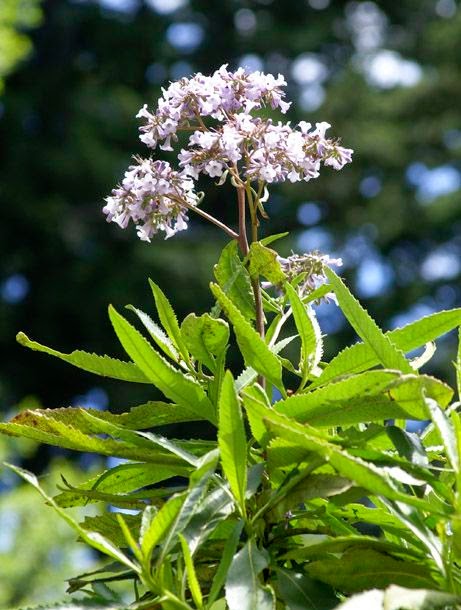The Zone diet
 |
| Lunch in zone diet |
Definition
The Zone Diet kegiatan is a food management system that claims to promote optimal metabolic efficiency in the body by balancing the hormones insulin and glucagon. Insulin is responsible for converting, in the blood, incoming nutrients into cells. Glucagon regulates glucose in the liver. The Zone’s food plan consists of a dietary intake of 40% carbohydrates, 30% protein, and 30% fat.
Origins
In 1995, Dr. Barry Sears, Ph.D., a former biotechnology researcher for the Massachusetts Institute of Technology, authored The Zone. Since that time, the book has sold over one million copies. One of the more popular carbohydrate-restrictive diets, the Zone’s success has recently spawned several Zone “knock-off” diets.
The Zone Diet is based on a kegiatan Dr. Sears developed almost twenty years earlier to treat heart disease in Type 2 diabetics. One of his key inspirations for developing this kegiatan was his own genetic history, which demonstrated an inclination for premature heart attack.
  |
Benefits
The name of Dr. Sears’ diet refers to an expression used by athletes to describe a euphoric state of optimal physical and mental efficiency. At its heart, the Zone Diet strives to control two metabolic hormones, insulin and glucagons, as well as properly balance eicosanoid metabolism.
Eicosanoids, found in fatty acids, are important in the regulation of inflammatory, immunological and hemostatic (arresting hemorrhage) processes. Metabolism is the chemical process in living cells that provides the body with energy and new material to repair waste.
In addition to permanent weight loss, this hormonal balance is said to increase longevity and blood flow, improve the immune system, and promote a sense of general well being. Furthermore, the Zone Diet is thought to assist in the prevention of chronic ailments such as diabetes, heart disease, and high blood pressure.
Description
 |
| dietary ratio 40/30/30 |
This state of hormonal balance, also referred to as “the Zone,” is achieved, according to the diet, by maintaining a dietary ratio of 40% carbohydrates, 30% fat, and 30% protein. It is this dietary ratio that has led people to call the Zone a “40/30/30 diet.”
The Zone diet requires eating five times a day. Three full meals as well as a mid-afternoon and pre-bed-time snack. The dieter is told that he/she should eat at least once every five hours to maintain proper insulin levels. There are two distinct methods used when preparing a Zone meal: the Eyeball Method and the Block Method. Following either method should provide a daily caloric intake of roughly 1,200 calories for women and 1,500 calories for men.
With the Eyeball Method, the dieter’s hand is used to judge portion sizes. For low fat proteins (chicken and fish), the portion should be approximately the size and thickness of the dieter’s palm. This equals roughly three ounces of protein for women and four ounces for men. Then carbohydrates are added to the meal.
For “favorable” carbohydrates, such as most fruits and vegetables, two loose, fist-sized portions may be added. For “unfavorable” carbohydrates, such as pasta and grains, only one tight, fist-sized portion may be added. Finally, a “dash” of dietary fat is added, which can consist of a few nuts, olives, or guacamole.
The second, and more precise, method for the Zone diet is the Block Method. In this method, each “Zone Food Block” consists of three “mini-blocks,” which each represent one portion each of low-fat protein, favorable carbohydrates, and dietary fat.
These mini-blocks contain a precise measurement of these macronutrients, specifically seven grams of protein, nine grams of carbohydrates, and 1.5 grams of fat. Each of the three daily meals and snacks consists of a set number of blocks. Women should consume three blocks per meal and one block for each snack, totaling eleven blocks each day.
Men should consume four blocks per meal and one block for each snack, totaling 14 blocks each day. These are considered the minimum daily nutritional requirements for an adult. Different factors, such as increased muscle mass and pregnancy, may increase the daily food block requirements.
The Zone diet is only one of four key elements in the entire nutritional kegiatan proposed by Dr. Sears. The other three elements are the use of monounsaturated fats, dietary supplementation of Omega-3 fish oils, and exercise.
These other elements, it is asserted, will help control metabolic function, produce “good” eicosanoids, and lower insulin levels. These four elements combined should produce a positive hormonal balance and thus increased health and permanent weight loss.
Preparations
There are few preparations required for going on the Zone diet. However, as with going on any diet, it is wise to consult with a physician beforehand. A physical examination and blood work are suggested, particularly to determine levels of cholesterol, glucose, insulin, and triglycerides (fatty acids).
Dieters should also prepare their kitchens by purchasing proper measuring tools and a food scale. In addition, they should empty their cupboards of all foods with high-density carbohydrates. Zone “quick start” kits are also available from various retailers and on-line stores.
 |
| Zone diet grocery list |
Precautions
As every individual possesses a unique biochemistry, achieving “the Zone,” the state of optimal mental and physical efficiency, can be very subjective. This subjectivity can lead to confusion and frustration as individuals attempt to find their perfect metabolic balance using the 40/30/30 diet plan. Some critics believe the Zone diet is too strict, making it too difficult to maintain over a long period of time.
Due to its high protein ration (30%), the Zone diet is not recommended for people with impaired liver or kidney function. Protein metabolizes in the liver and is then excreted by the kidneys. The added strain of a high protein diet can cause long-term damage to these organs, as well as cause kidney stones and bone loss.
Some experts further believe that these high protein requirements also contra-indicate the Zone diet for people with or at risk of heart disease, due to the higher level of saturated fat and cholesterol in many high protein foods. Clinical studies have shown that high fat/high protein/low carbohydrate diets can also increase the risk of serious diseases such as high blood pressure, stroke, and adult-onset diabetes.
Despite Dr. Sears’ claims to the contrary, many scientific studies show that the Zone diet may actually impair physical performance rather than enhance it. Fatigue experienced by athletes during exercise may be due to the diet’s low proportions of dietary intake of carbohydrates (as stated above) as well as inadequate caloric intake. Additionally, the suggested benefits of risk reduction and increased health may be overstated.
Side effects
Dr. Sears states there are few or no side effects associated with his diet. However, many nutritional experts disagree. The Zone diet requires an intake of carbohydrates below the minimum nutritional daily requirements (100–120 g) agreed upon by most health experts.
This deficiency can lead to several health risks such as cardiac problems, ketosis, and orthostatic hypotension (temporarily lowered blood pressure, usually from standing up quickly, causing temporary blood flow reduction and lack of oxygen to the brain, then lightheadedness and sometimes loss of consciousness). Mineral and vitamin deficiencies caused by low carbohydrate consumption may increase the risk of numerous diseases.
The diet’s high protein intake places added stress on kidney functions, increasing the risk of gout, osteoporosis, kidney stones, and kidney damage. One researcher, Sachiko St. Jeor, and colleagues concluded that dieters following diets like the Zone are potentially at risk for vitamin and mineral deficiencies.
Research and general acceptance
Although the Zone diet is not as strongly criticized as most high protein/low carbohydrate diets, few health organizations and nutritionists endorse it. Indeed, organizations such as the American College of Sports Medicine and the American Dietetic Association have publicly disagreed with the 40/30/30 plan.
Most experts note the Zone diet’s lack of scientific credibility, either claiming that the majority of Dr. Sears’ observations and findings are supported by poorly controlled studies, unproven theories, non-validated results, and half-truths, or that the majority of published scientific research points to the detrimental effects of the Zone rather than to its health benefits. The long-term effects of the Zone diet have not been fully researched; therefore, the diet’s long-term health benefits and risks are still undefined.























